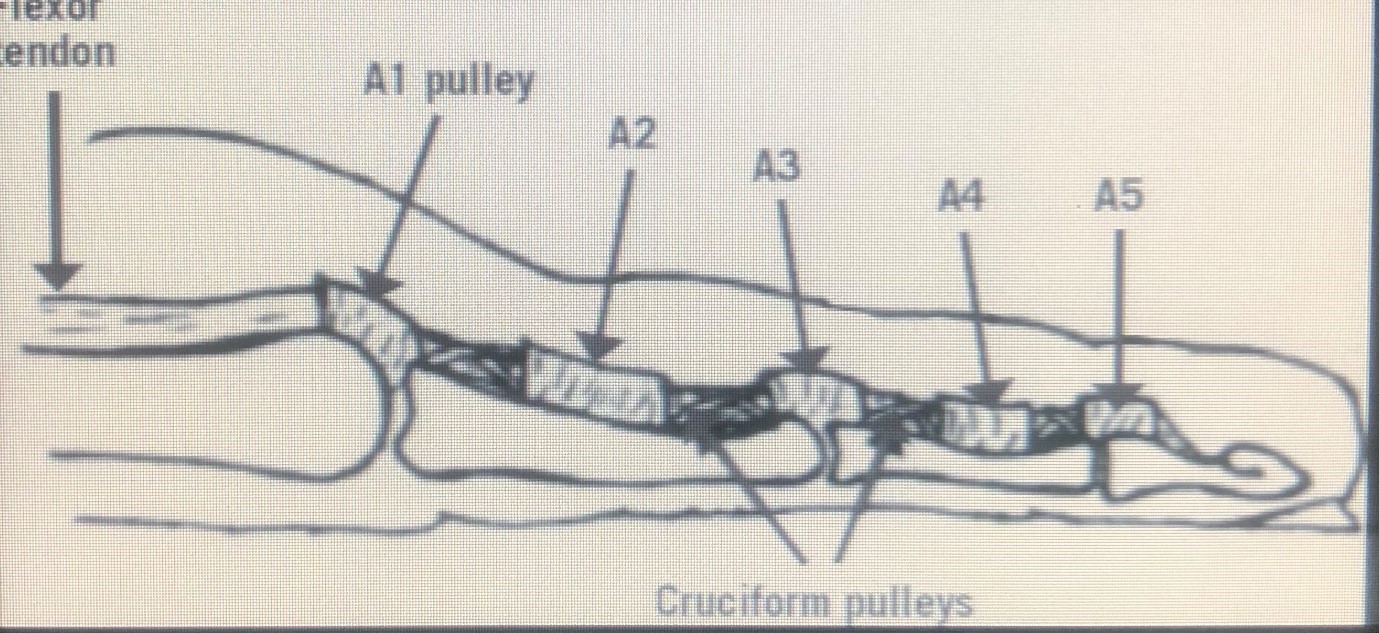

Trigger finger or stenosing flexor tenosynovitis is a common condition seen in OPD (Out Patient Department). The most common presentation is inability to extend a particular finger or sudden locking and unlocking of the finger with pain. The flexor tendons of the hand cross to the fingers in anatomical structures called the Pulleys. The function is the same as the name suggests. The Pulleys are structures through which the tendons pass for their normal physiological gliding movements which is essential for the transmission of the force to flex a particular joint of the finger. Each tendon of the finger passes under these pulleys which are numbered for their function and easier understanding as A1 Pulley to A5 Pulley. For example, the A1 pulley is the first pulley at the metacarpophalangeal joint, since it’s the first pulley the tendon glides under, the maximum forces of the tendon during its normal excursion (movement of the tendon) through A1 pulley, making it prone for its pathological involvement in this condition called Stenosing flexor tenosynovitis (Trigger finger) of the hand. This condition is seen in two types of age group. In Children below the age of 8 years and in adults in there 4th and 6th decade. In both these age groups the etiology of the condition is different.

Figure Showing all the pulleys of the Finger
In adults the presentation is typically of locking and unlocking of a particular finger. These episodes of locking and unlocking of a particular finger are accompanied with pain and significant discomfort. Here the involvement of A1 pulley at the junction of the metacarpophalangeal joint is the commonest site. Particularly for a trigger finger the underlying cause is closely associated with poor glycemic control seen in Diabetic patient especially in type 1. Recent research into the etiology of trigger finger has shown metaplasia of the tissue in the pulley causing it to thicken and constrict the underlying flexor tendon. This thickening of the A1 pulley can be felt as a hard nodular swelling in the palm.
Trigger Finger in children involves the Thumb. The presentation is typical when the parents notice the child is unable to extend the thumb. The etiology in the recent literature has been towards a developmental mismatch between the size of the FPL (Flexor Pollicis Longus) tendon and its Annular pulley A1. Most the children require surgical release of the A1 pulley to remove the triggering.